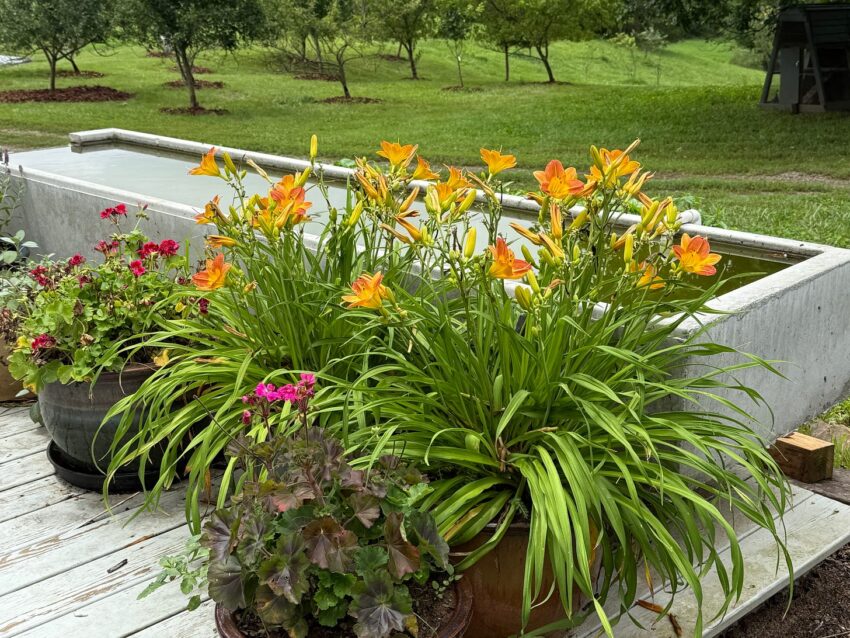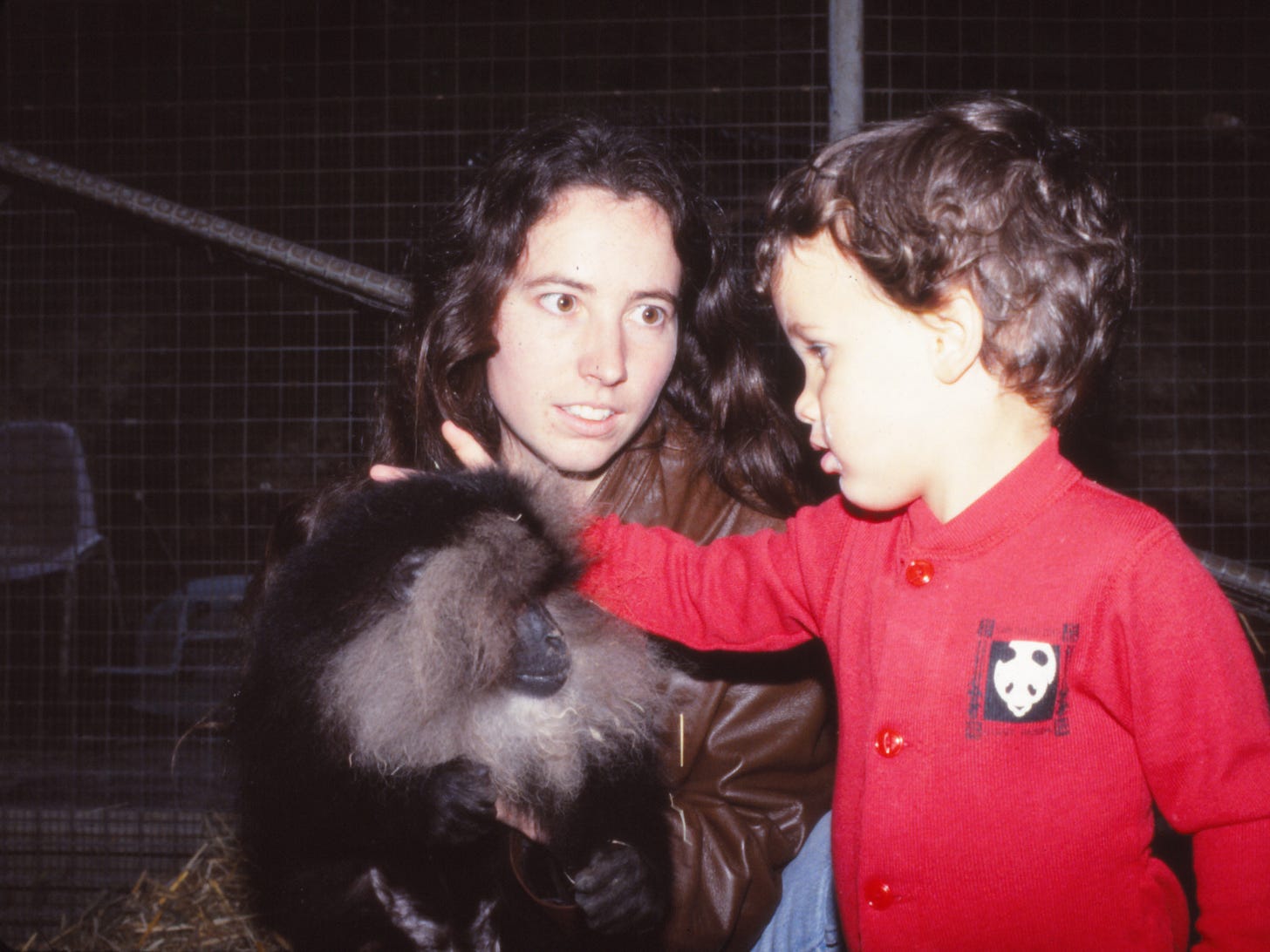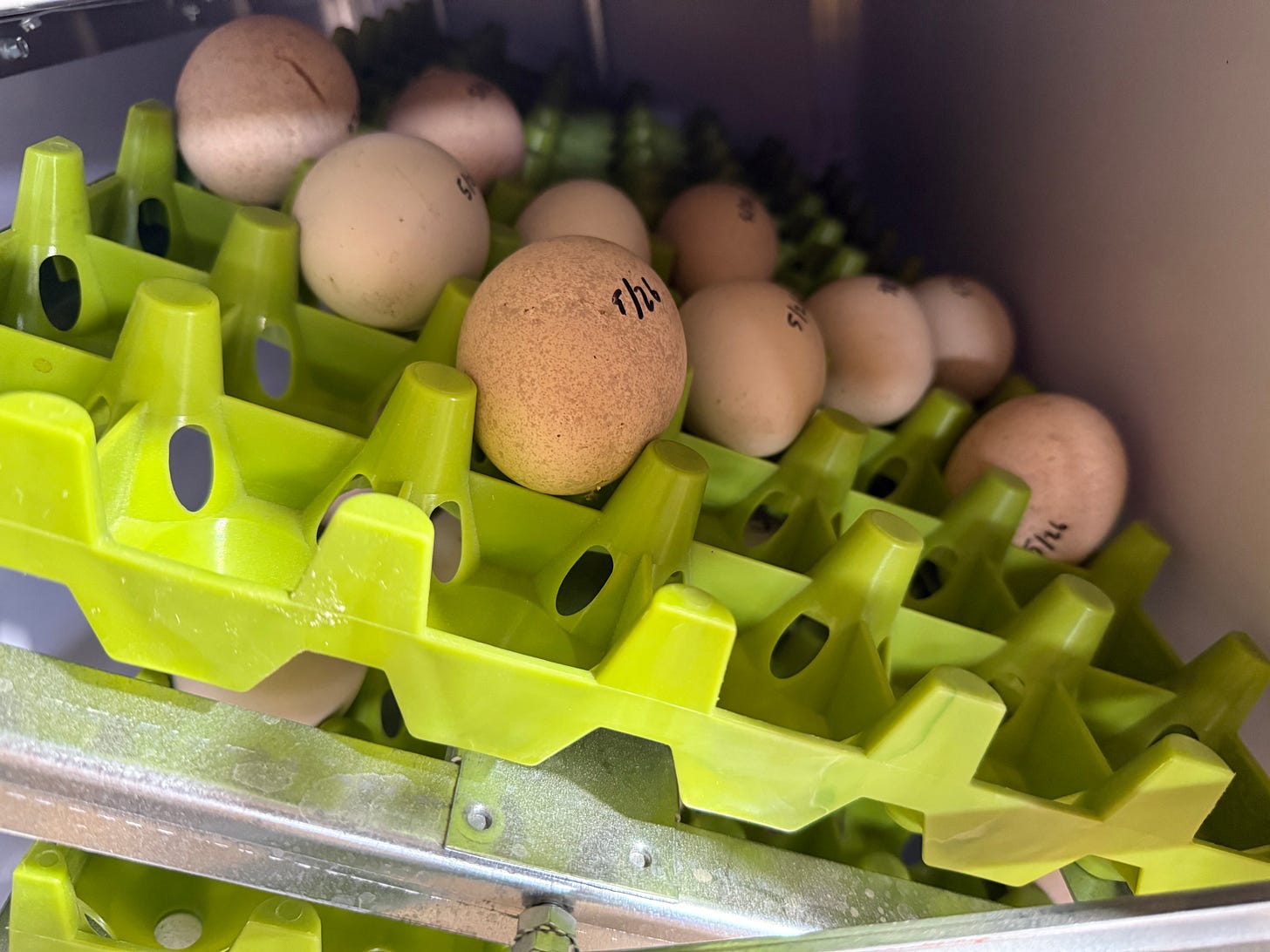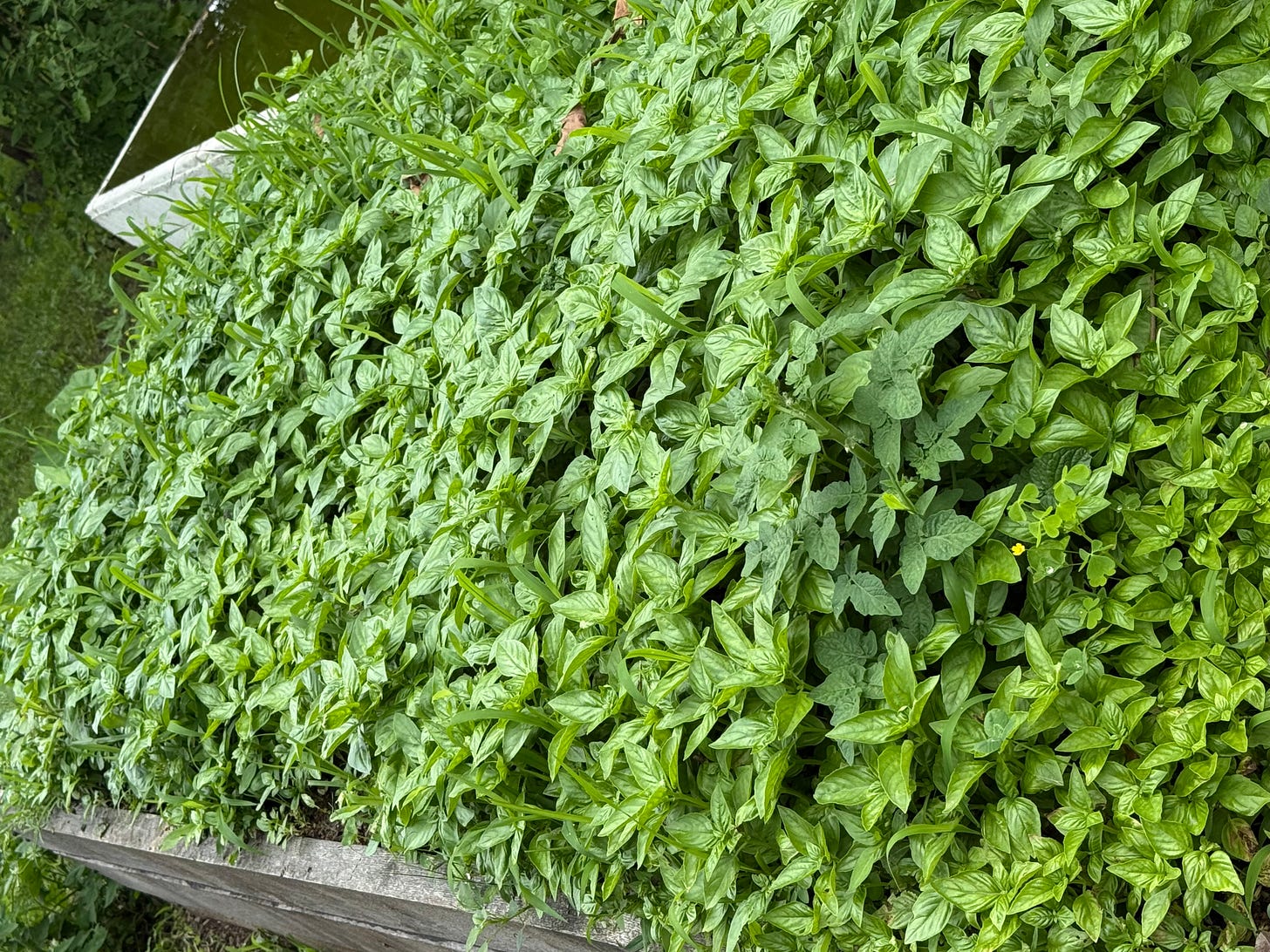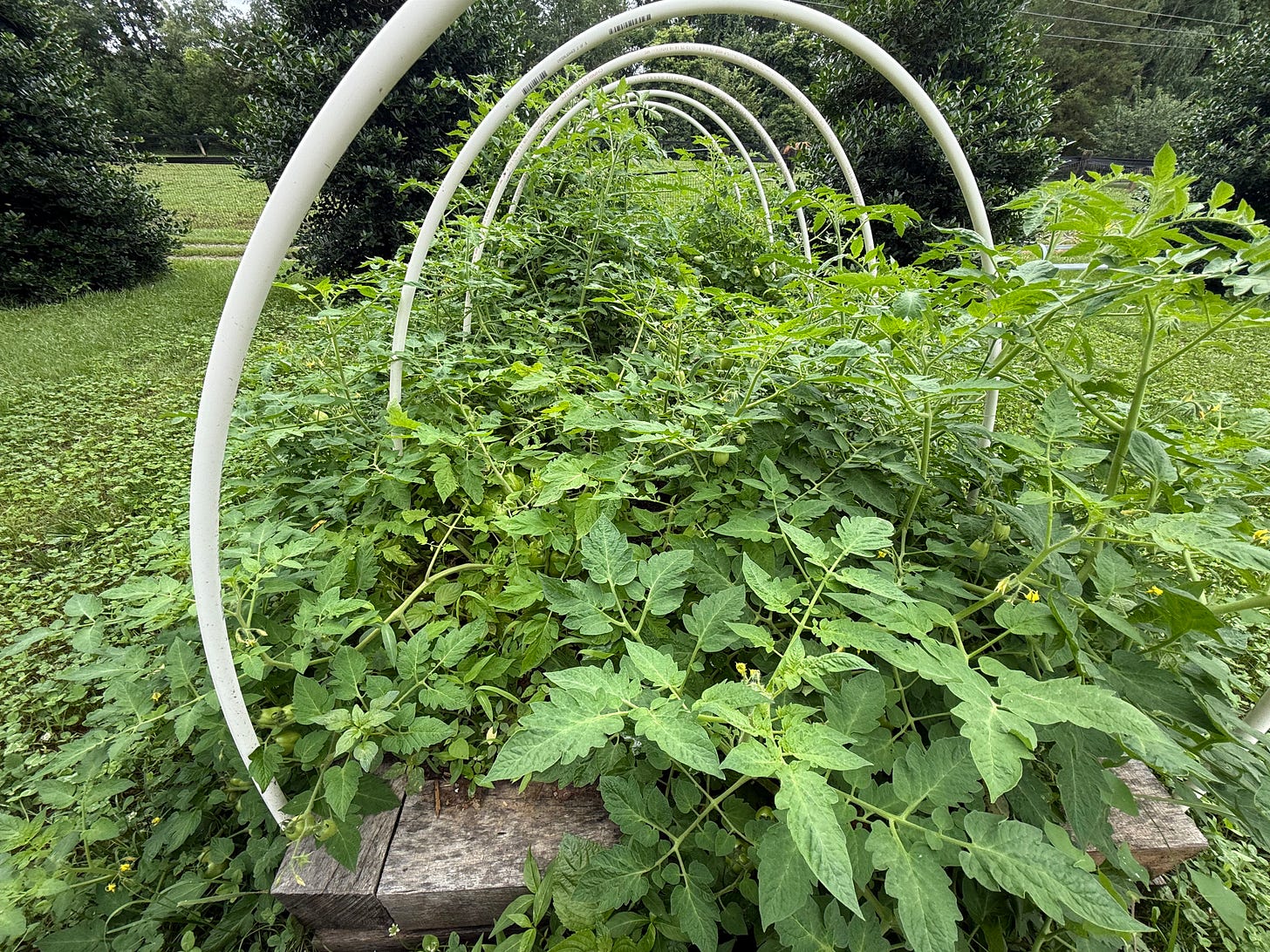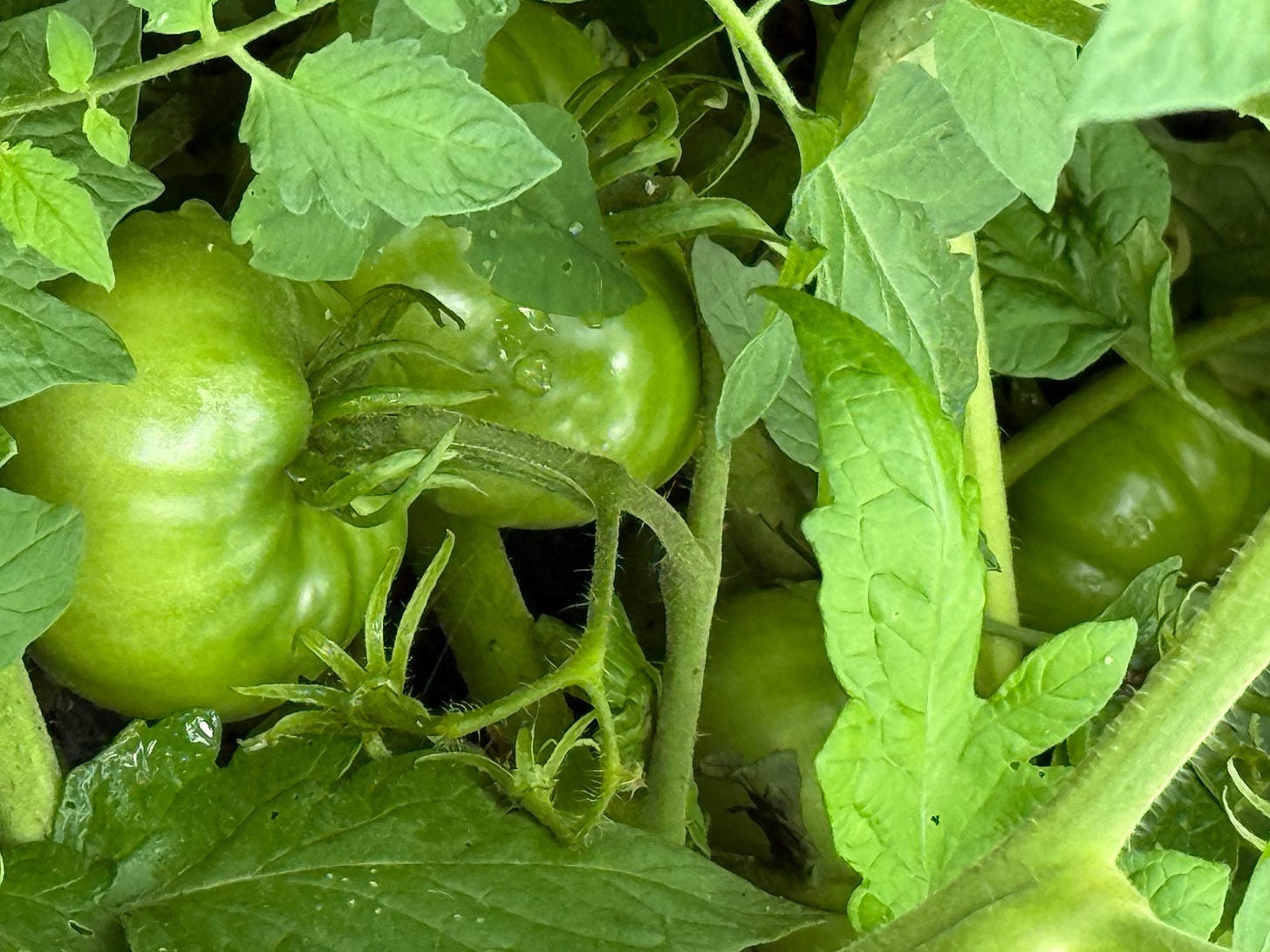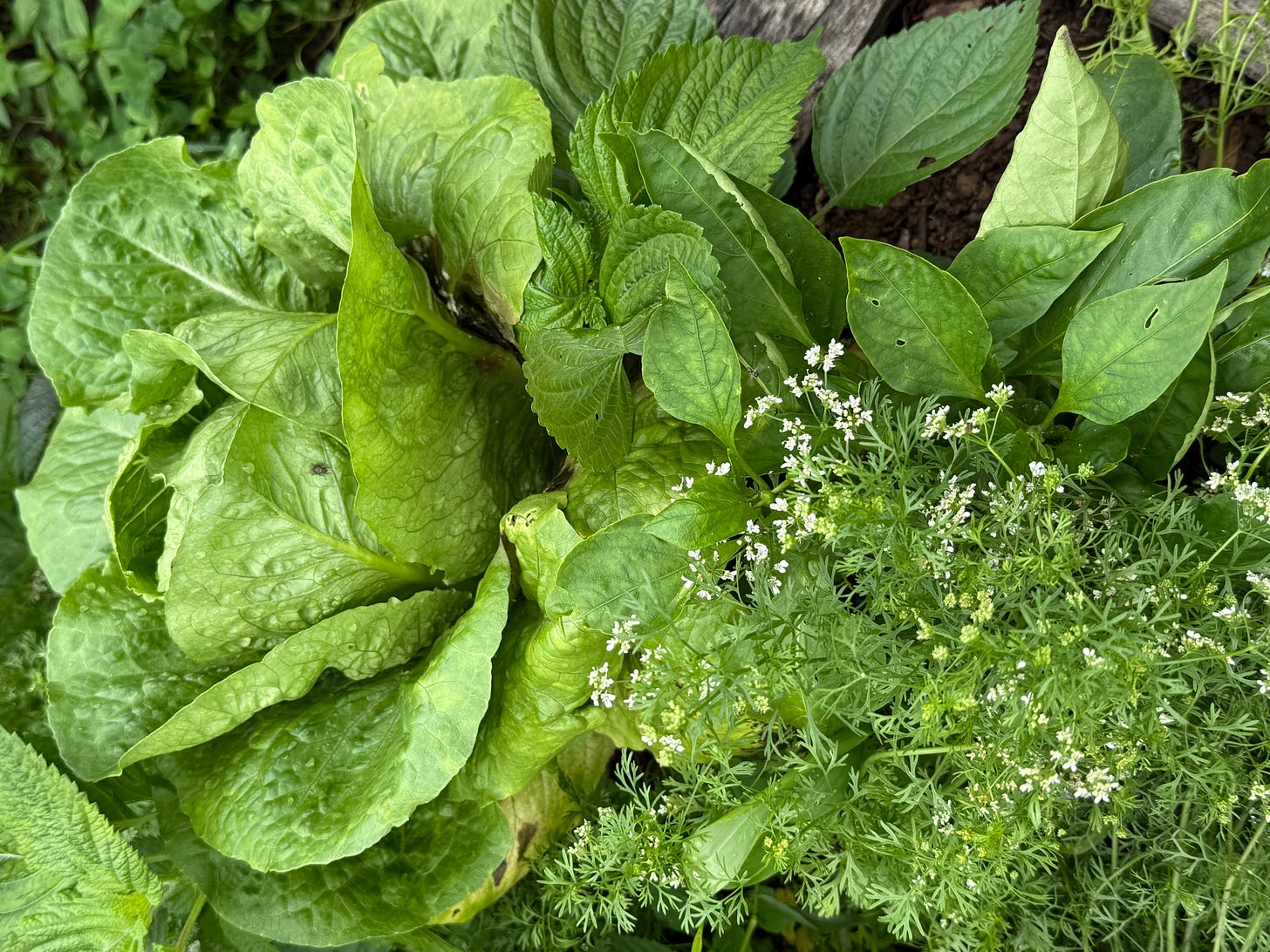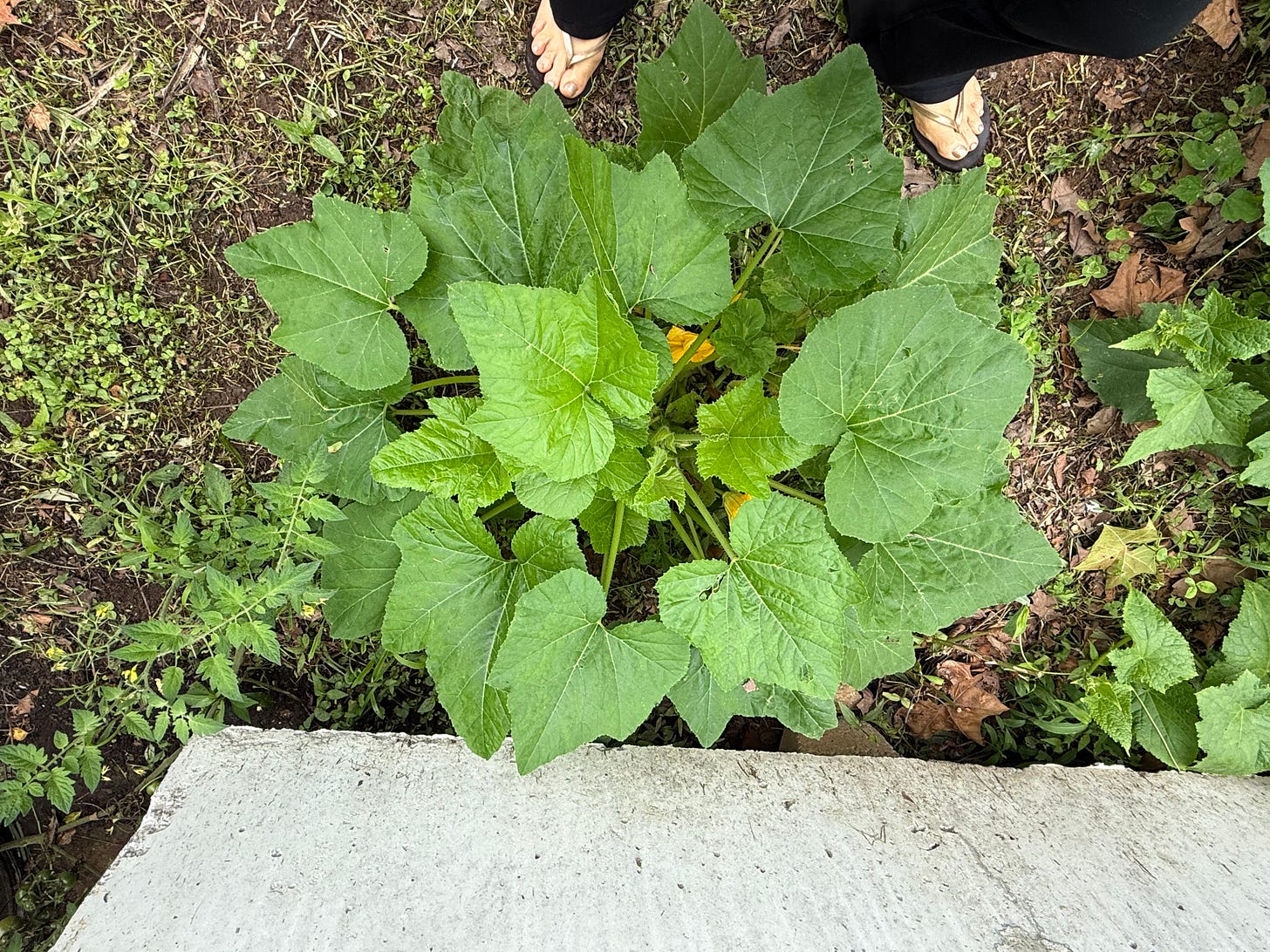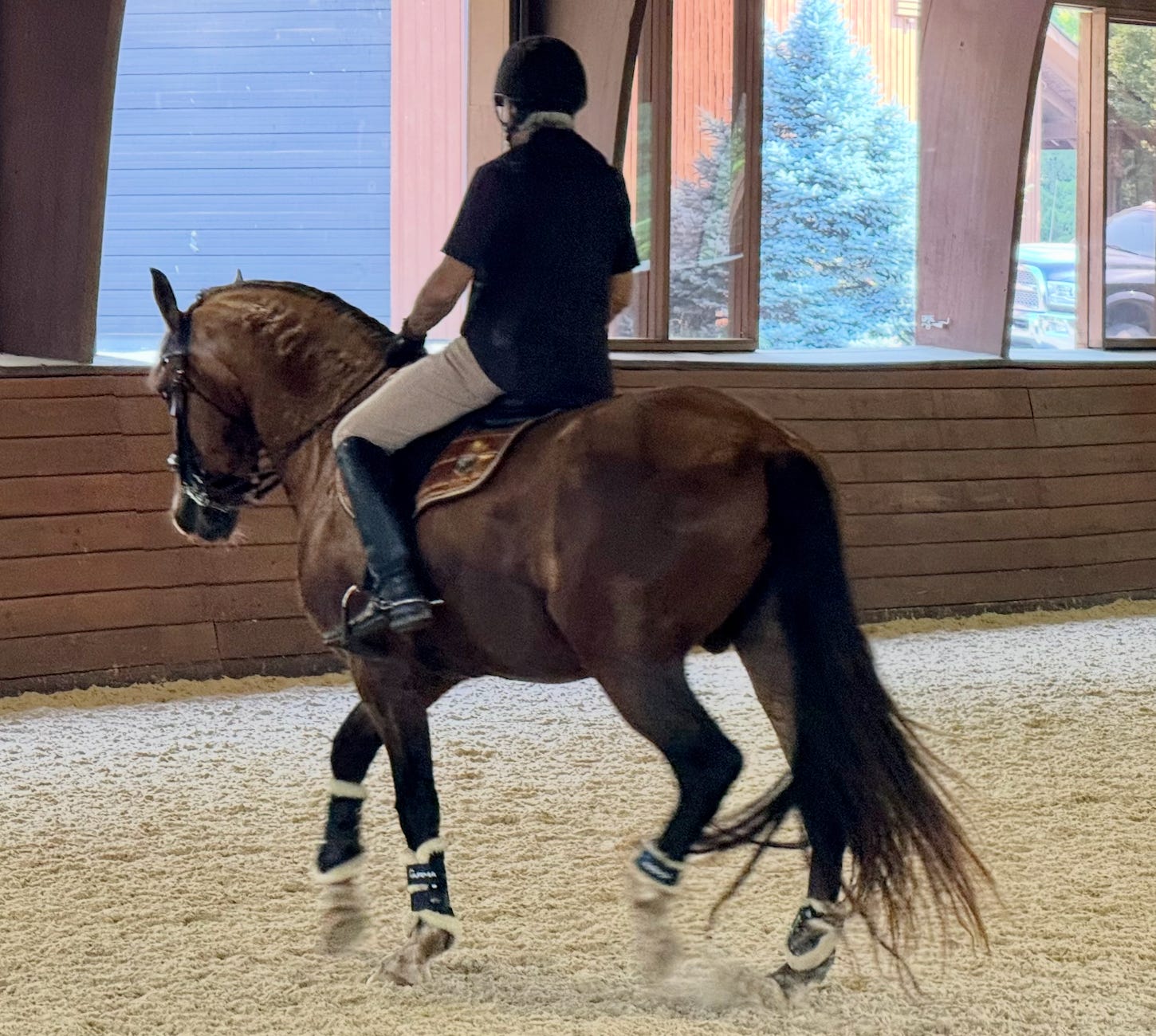Dr. Robert Malone:
It has been a busy month here on the farm. Spring has been extended into what is usually the beginnings of a hot, humid summer. Instead, the rain keeps falling, and the temperatures have remained temperate.
I have been bugging Jill for a while to buy some brown (wild) turkey eggs, as we have a very fine incubator with an egg turner, and I happen to love seeing wild turkeys roaming in the pastures and forests. As the eggs are seasonal and we have been traveling, the time never seemed right. However, our local friend, Bree, who has done some work for us over the years, and her daughter, Joleen, who also occasionally helps out on the farm, found a clutch of wild turkey eggs this year. Bree incubated them and had a good-sized hatch. So, Jill bought nine three-week-old birds from her about six weeks back. We kept them in the office trailer, under a heat pad in a stock tank, which we use as a brooder, until a couple of weeks ago, when the little turkeys graduated to our little outside coop. It has hardware cloth on the exterior and a chicken wire floor. It’s pretty bomb-proof for predators, or so we thought.
“That’s not right”…
Sunday, as we were doing the rounds after all our travel getting back from FreedomFest in Palm Springs the day before, I heard a lot of fluttering going on in the coop. Walking over, I notice a lot of young birds panicking -now that is definitely not right. So, what’s up with that?
Upon closer inspection, I see a big ol’ black snake looped up on one of the high perches. These birds are now approximately one to two pounds each, and although small, they are fully feathered. Way too much of a meal for Mr. Snake. He kind of looked like he was having second thoughts about the whole thing, too, as the birds were beating themselves against the wire to get away from him. I got my hand in the coop and threw him off the perch, to a place on the ground next to the coop where I could step lightly above his head and then grab him by the neck, just behind his head. A big, excited black snake can exact a nasty bite, so being careful in handling is the name of the game. Once caught, I relocated him under the office trailer, about a 1000 feet away from the babies, down by the horse barn. That snake seemed big to enter under the chicken wire cage bottom (actually aviary wire), so he must have found some little hole under the wood siding.
We’ve had a tough time battling rats this year in the barn, so more snakes are welcome. However, upon returning from the barn and telling Jill the story, she adamantly disagreed, saying that having too many snakes in the barn is just an over-the-top “ick” factor for her, and could I please release future captures from the house area elsewhere? Guilty as charged, I have released three snakes down by the barn just this year.
We have had a significant increase in snakes around our main compound this year. I believe it is because of the peacock coop and the wild bird feeders – both of which make seeds and grain available to rodents. In turn, these vermin attract the snakes.
Black snakes are pretty common around here. For years, we have had a large snake come into the recording studio to shed his skin up in the rafters. We have never actually seen that snake, just the leftover snakeskin looped up high against the open trusses. Even that sends Jill over the edge, and she isn’t scared of things easily. But snakes are her trigger button.
When she worked at the San Diego Zoo and Wild Animal Park in San Diego County during the 1980s, she occasionally found, then had to capture and release rattlesnakes from the Cheetah Research Center, where she sometimes worked. We both grew up in “rattlesnake country” in California, so the chill of finding a venomous snake remains high on her list of things she would rather not do.
Somewhere, I have photos of her with the cheetahs at the Wild Animal Park, but those have not made it into digital form. I do have this photo of her and our son, with a lion-tailed macaque from the 1980s. That little macaque had severe epilepsy, so he was often used for various demos and tours. Before she pursued her PhD, Jill’s first career was as a behaviorist. She conducted behavioral studies on this endangered species at the San Diego Zoo, as they didn’t breed well in captivity. Her particular interest was why mother-infant dyads didn’t thrive. Although she worked with macaques and cheetahs, her primary interest was in avian species (birds).
My mother also used to raise birds, and I have had numerous parrots and parakeets growing up. My parents gave me a young parrot for my birthday when I was fourteen. That little yellow-fronted amazon was a special family member for Jill and me, until she died when I was around fifty years old.
So, all these birds that we breed and truly become part of our family come from the delight of studying and living with various avian species, a passion that goes back to our childhood for both Jill and me.
Back to the little turkeys – evidently, the sheer fright of a snake in the pen caused one of the young turkeys to die. She didn’t appear to have any bite marks on her and no signs of trauma. Her little body was still limp when I recovered it from the coop, so it had just happened. Anyway, young poultry can be difficult to keep alive, and some loss of life is expected. Still, it is always a sad event.
So, why do I want a bunch of wild turkeys? Although there remains one pair on the property that I know of, the foxes or hunters have significantly culled the population. Wild turkeys are not flashy but are a big, beautiful native bird, and as we build the health of our forest and pasture lands, having turkeys just feels right. They are historically part of the ecosystem around here.
It has been noted that we could raise them to butcher, and it is true, we could. As many remember, we did kill and process 15 roosters a while back. A few of them are still in the freezer. However, these eight birds will be released. Having turkeys roaming around the farm with the peacocks and guinea fowl will be a treat to watch. Note that the goose and emu hold themselves above hanging with such riff-raff and have their own social club. Gizmo and Gonzo much prefer the company of humans over that of common birds.
Baby Peas are hatching.
It is that time of year again. Baby Pea season.
We took our mature male and threw him in with two peahens and the ten chickens in the big coop a couple of months back, and the juvenile male (almost two years old, but hasn’t grown a full train yet) in with the other two hens. Then the egg collection began.
We set the eggs out at room temperature and each day, we turn them a quarter rotation. At the end of the week, when we have a goodly collection, they get popped into the incubator, with the start date of the incubation written on the egg. Peacock eggs take longer to hatch, and the temperature and humidity requirements are slightly different than those of chickens, so these need to be adjusted before incubation begins.
On day 25-26 of incubation, the eggs are placed in the bottom of the incubator to sit. Hatching occurs around day 28.
The humidity for the first batch fluctuated somewhat, so out of a dozen eggs, we had only four hatch. Out of the four, one is a pied and one a black-shouldered. So, most likely the young pied male is fertile. The next batch hatches on June 24 – so more babies are coming. The two normals are already spoken for, and we will keep the pied and black-shouldered babies if they make it. Pea babies have a tendency to up and die at an alarming rate, so time will tell.
The Gardens
I have written before about how we scatter basil seed as if it were grass and then harvest the young plants as microgreens and then thin out the plants, as the season progresses. As usual, the verdant green of this 4×8 raised bed is a stand-out
This is Jill’s freezer pesto recipe:
I make a lot of pesto every summer and freeze it in freezer bags, usually about a cup per bag. Note – this recipe is written to be scaled up or down – I have processed as much as 20 pounds of leaves or as little as a few cups.
Also note that pesto can be frozen with or without nuts and cheese, as the recipe directions indicate.
Ingredients:
-
Basil leaves
-
EVO (Extra virgin olive oil) as needed
-
Garlic bulbs (skinned) – about 2 cloves per cup of processed leaves and oil
-
1/3 cup Parmesan cheese (or guerre cheese) for each cup of processed leaves and oil
-
¼ to 1/3 cup chopped pecans, chopped walnuts or pine nuts per cup of processed basil/oil
I have two strategies. One is to homogenize the basil, garlic, and olive oil but leave out the other ingredients (which saves on freezer space); the other strategy is to create the entire sauce and freeze it.
Here is my recipe (again, always to taste).
-
Harvest basil leaves (mostly without stem). Wash well and check for bugs on all surfaces. The leaves do not have to be dry to be processed.
-
Puree leaves in a food processor or blender with olive oil. I add olive oil while processing to make a thick paste. There is no set amount of oil – just add in a bit at a time, until a course paste can be formed.
-
Then add the garlic to the blender at a ratio of about 1 TBS (about two cloves) per one cup of processed leaves and oil and process again.
-
The mix can be frozen at this point, or carry on with the recipe.
-
Add about 1/3 cup shredded or grated Parmesan cheese per cup of processed basil/oil paste (I use a good quality cheese, either organic or from the EU, to avoid antibiotics and growth hormones).
-
Add ¼ to 1/3 cup chopped pecans, chopped walnuts or pine nuts per cup of processed basil/oil. I like to use the nuts that are in season, local and fresh is best. So, usually in the South, that means pecans. When I lived in California, I used walnuts. Of course, it tastes best with russian pine nuts, which are superior to the Chinese ones (which I won’t use – as they can leave a funny taste in the mouth for weeks on end for some people – also known as pine nut syndrome).
-
Mix again in the processor – very briefly or even better, remove the pesto from the blender and mix the cheese and nuts in by hand (this is my preferred method, as there isn’t a risk of over-processing the cheese and nuts).
-
If I am processing a lot, I process small batches of leaves/oil and garlic. I put that mix into a larger bowl, then add the cheese and nuts all at once and hand mix.
-
Once mixed, it is ready to be eaten or I place in bags and freeze.
-
If you are freezing the pesto, note the date and whether this is a basil/oil/garlic mix or pesto.
Once made, pesto can be kept in the refrigerator for about a week. It will turn dark on top due to oxidation if the lid of the container is not in contact with the pesto. The darkened mix won’t affect the taste – just give it a good mix before using.
This sauce is great on pasta, in sandwiches as a spread (in place of mayo), or on baked potatoes. It is very rich, a little goes a long way!
More on the vegetable gardens:
The sweet potato plants are really coming along, as are the carrots.
Sweet potato plants are a vine and are great used as an ornamental. This fall and winter, we will start with our tubers and then plant them out in containers in the greenhouse. If we can get them to grow all winter, not only will they look wonderful, they will provide us and the chickens with fresh tubers year-round.
Stock tanks that horses have punched a hole in are a favorite of ours for raised beds, but remember anything that can hold a plant can be used, as long as it is non-toxic (no old lead-painted items). Old buckets, wheelbarrows, broken furniture drawers, etc. – the possibilities are endless.
Also, in the photo above, the sweet potatoes were grown from last year’s tubers, the carrots were grown from seed, and the tomatoes were either self-starts or grown from seed.
This spring, we have been eating a lot of carrots and large salads, as that is what is ready. The onions and basil are also being harvested and used.
The point being that vegetable gardening does not have to be an expensive endeavor! Just remember to plan out the cooking, so that what is in season is what is in the pot.
One thing to note is that the seed producers are getting more stingy with seed. It is a good idea to read the weight of the packet or the number of seeds prior to buying. Opening up a packet of seeds and discovering a grand sum of ten seeds is not “a feel-good” moment for me! One idea to figure out what is normative is to use other seed packets for comparison. For this reason, Amazon is a great place to buy seeds, as the reviews and the packet inserts can be contrasted and compared.
Of note, our tomatoes look like they will produce a bumper crop this year!
And yes, those plants have all been self-starters or grown from seed.
Peppers are thriving also.
Our cilantro has now gone to seed, we are leaving a plant in the ground to try to harvest seed from.
The squash aren’t producing yet, but the blooms and the baby squash are on the plant.
Naughty Gonza
Gonza the goose lays us 4-5 large eggs a week. Jill thinks the egg texture is a bit coarser than chicken eggs, so these are usually fed to the dogs or as a novelty item for the occasional overnight visitor.
Gonza is quite the character, and whoever tells you that all geese are mean has it wrong! They do require sensitivity and understanding, true, but don’t we all?
Jade has been visiting the mares recently, although he had to be removed due to the Venus and Mars conflicts within the herd- dynamics that were heading in a very bad direction.
Below is a video of Jade with the mares this month. I can’t remember if I have shown this video before, apologies if I have!
Last week, I managed to sneak away and take a lesson on Jade, which was a real highlight. I don’t have the time to be the rider I once was, but being on a horse is one of my life’s joys.
.
Below is our five-year-old homebred stallion Quartz – a Jade “baby”. Jill is now riding him also.
We have retained his two full brothers (two years old and one year old) – as they match Quartz exactly. We hope to one day exhibit them together.
Well, I have rambled on long enough about the farm.
Now that today’s essay is completed, Jill and I are off to Alexandria, VA, to attend a “cigar reception” with CPAC friends. My schizophrenic life!
Click this link for the original source of this article.
Author: Robert W Malone MD, MS
This content is courtesy of, and owned and copyrighted by, https://rwmalonemd.substack.com and its author. This content is made available by use of the public RSS feed offered by the host site and is used for educational purposes only. If you are the author or represent the host site and would like this content removed now and in the future, please contact USSANews.com using the email address in the Contact page found in the website menu.


